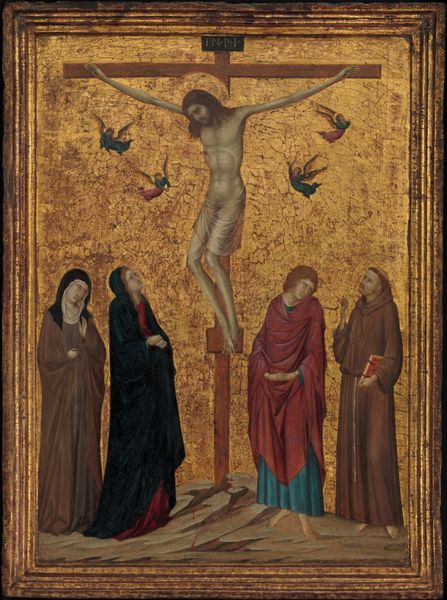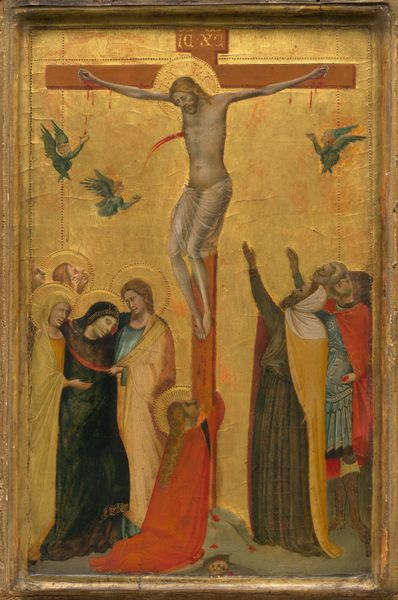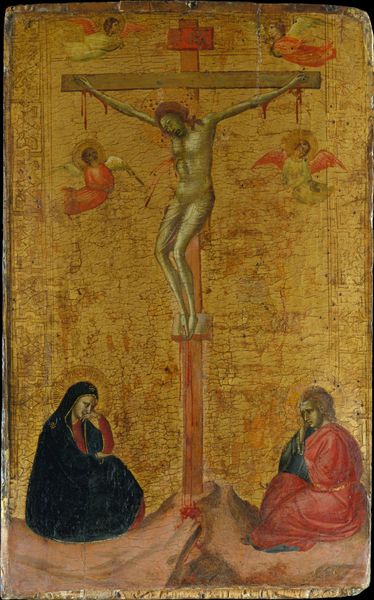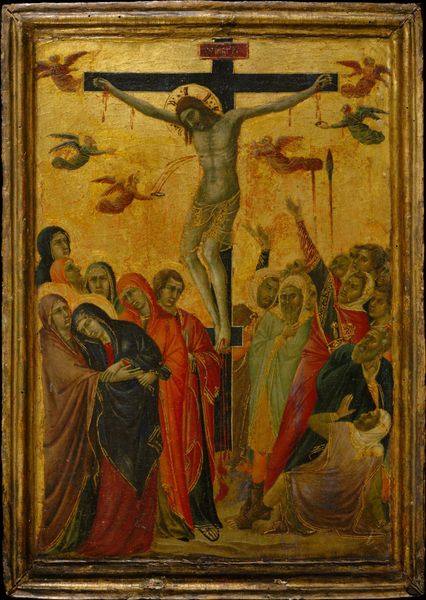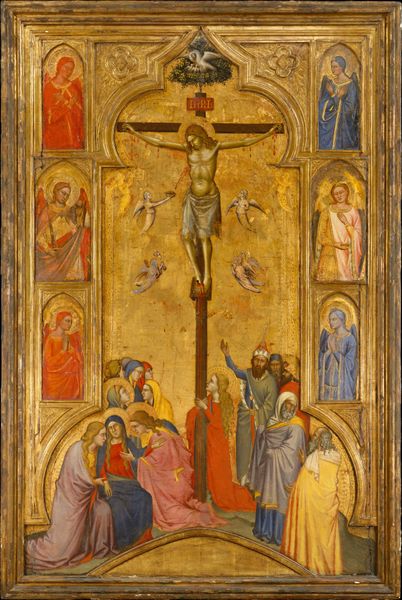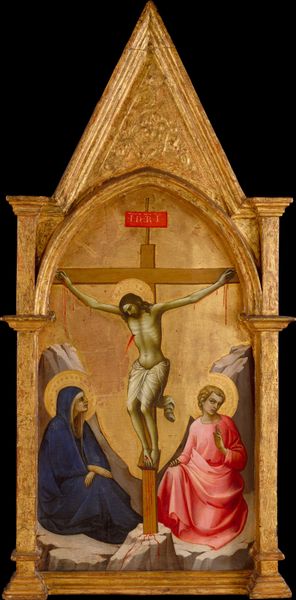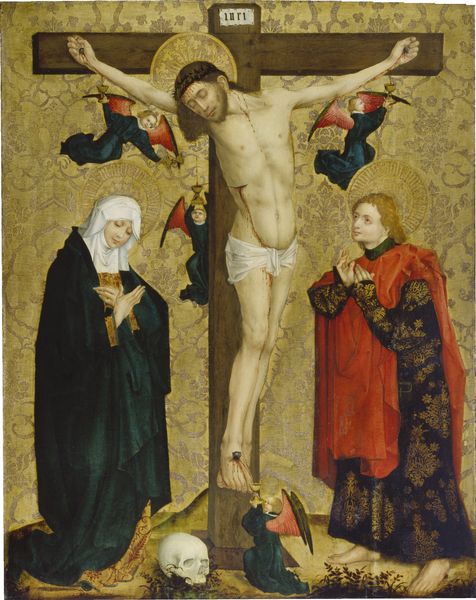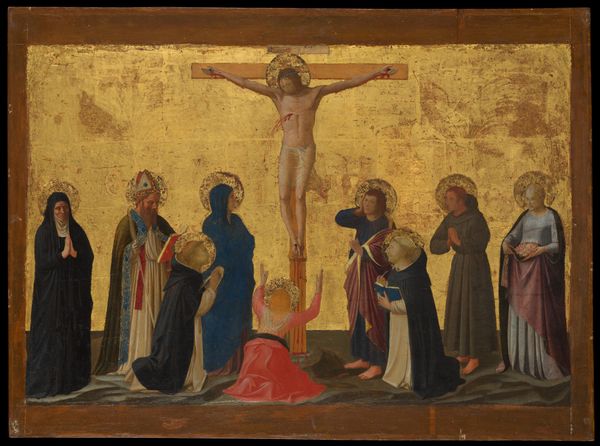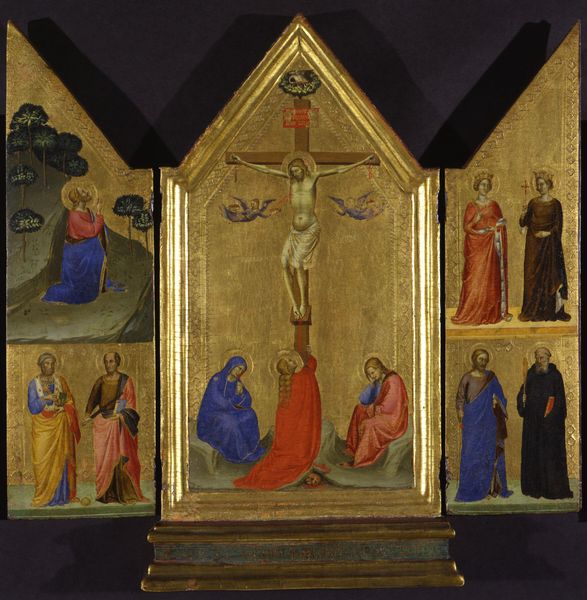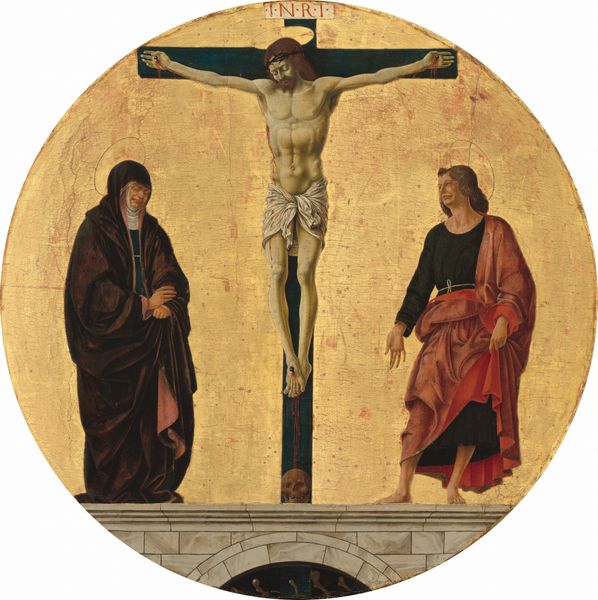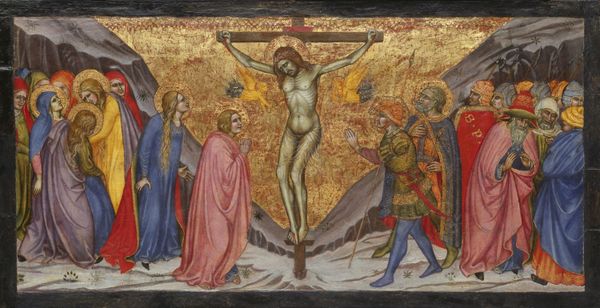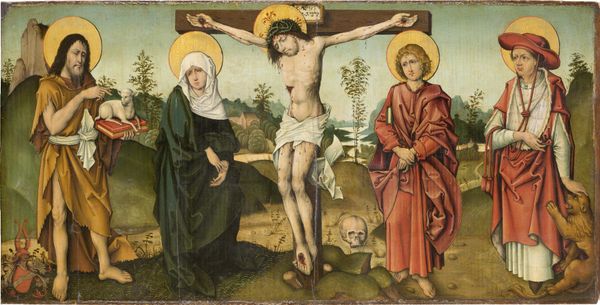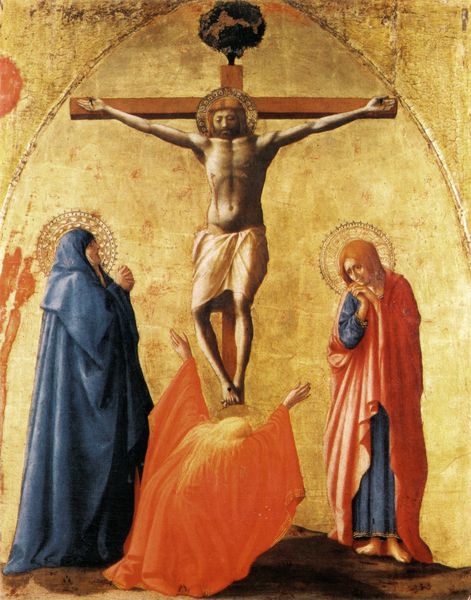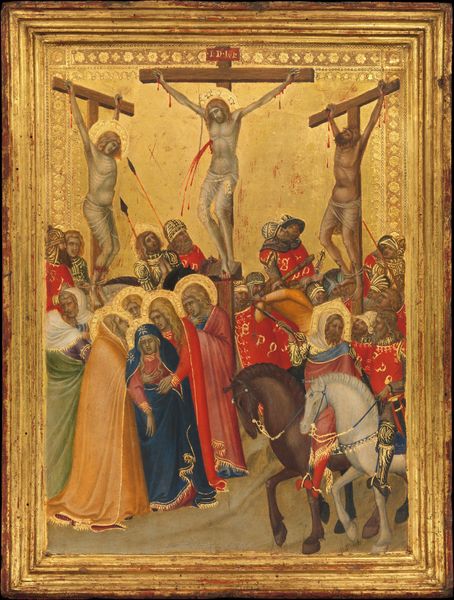
The Crucifixion 1395 - 1405
0:00
0:00
tempera, painting, fresco
#
medieval
#
narrative-art
#
tempera
#
painting
#
caricature
#
figuration
#
fresco
#
naive art
#
crucifixion
#
history-painting
#
italian-renaissance
#
virgin-mary
#
watercolor
#
angel
#
christ
Dimensions: 33 7/8 × 20 5/8 in. (86 × 52.4 cm)
Copyright: Public Domain
Editor: So, this is "The Crucifixion" by Stefano da Verona, made sometime between 1395 and 1405. It’s a tempera painting, and seeing it in person, the gold leaf is much more striking than I expected. How do you read a piece like this? Curator: It's fascinating to consider the materials first. Tempera paint, gold leaf – these weren't just artistic choices, but also statements about wealth, access, and the labor involved. Gold leaf wasn't casually applied; its use signified preciousness and, crucially, financial investment by the patron. How does the prominence of the gold in this piece affect its impact for you? Editor: I guess it makes it seem really extravagant for a scene depicting so much suffering? It's almost contradictory. Curator: Precisely. And that contradiction is key. Who was commissioning these pieces, and why? Wealthy patrons often used religious art to demonstrate their piety, but also their status. The gold and the lapis lazuli that would've been ground to create ultramarine blues were signifiers of their affluence in a way a fresco in a less opulent material couldn't be. The production was a whole system, an economy that touched many people from miners to guildsmen. The choice of materials in this painting directly reflects that system. Where does the labor involved come into focus for you when observing "The Crucifixion?" Editor: Well, just imagining the precision and skill needed to apply all that gold leaf gives me a new appreciation for the craft involved. I had never thought about it in such an economical, material way. Curator: Right. By understanding the context in which the piece was created -- considering not only *what* is depicted, but *how* and with *what* -- we reveal a complex interplay of art, religion, economics and society. Editor: That's a perspective that adds so much more depth than simply analyzing its aesthetic or religious value. Thanks for this way to consider materials!
Comments
No comments
Be the first to comment and join the conversation on the ultimate creative platform.
